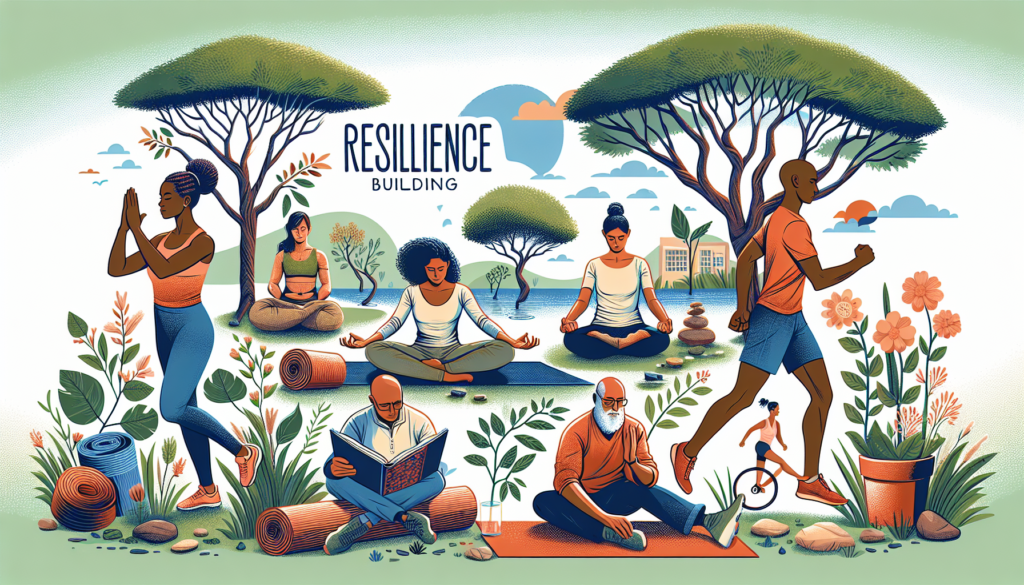Unlocking Success: The Power of Effective Goal Visualization
Have you ever pondered the difference between those who achieve their dreams and those who struggle to make progress towards their goals? The secret lies in the power of effective goal visualization. This transformative tool has been utilized by successful individuals across various fields, from athletes to entrepreneurs, to turn their aspirations into reality. In this comprehensive guide, we will delve deep into the art of effective goal visualization, exploring its benefits, techniques, and real-world applications. Join us on this enlightening journey as we uncover the key to unlocking your true potential.
The Science Behind Goal Visualization
At the core of effective goal visualization lies the principle of mental imagery. When we visualize our goals with clarity and detail, we activate the same neural pathways in our brain as we would when actually performing the task. This powerful mental rehearsal primes our brain to work towards achieving our goals, paving the way for success. Research has shown that visualization can enhance motivation, increase self-confidence, and improve performance. For instance, a study conducted at the University of Chicago found that athletes who engaged in visualization techniques showed significant improvements in their athletic abilities compared to those who did not.
By harnessing the power of visualization, we can create a roadmap to success that aligns our thoughts, emotions, and actions towards a common goal. Whether you aspire to climb the corporate ladder, master a new skill, or lead a healthier lifestyle, effective goal visualization can be your guiding light on the path to success.
The Art of Setting Clear Goals
Before we dive into the intricacies of goal visualization, it is essential to first establish clear and achievable goals. Setting specific, measurable, attainable, relevant, and time-bound (SMART) goals is the foundation of effective goal visualization. By defining your goals with precision, you provide your mind with a clear target to focus on during the visualization process.
For example, instead of setting a vague goal like “I want to lose weight,” a SMART goal would be “I aim to lose 10 pounds in the next three months by following a healthy diet and exercising three times a week.” This level of specificity not only clarifies your objective but also enhances the effectiveness of your visualization exercises.
Visualization Techniques for Success
There are various visualization techniques that can help you harness the power of your imagination to achieve your goals. One popular method is guided imagery, where you create a detailed mental picture of your desired outcome. Close your eyes, imagine yourself in the situation you wish to manifest, and engage all your senses to make the visualization as vivid as possible.
Another effective technique is future pacing, where you visualize yourself already having achieved your goal. By mentally projecting yourself into the future and experiencing the emotions of success, you reinforce your belief in your ability to make your dreams a reality. This technique is commonly used by top performers to maintain focus and motivation in pursuit of their goals.
Additionally, the use of affirmations can complement your visualization practice by reinforcing positive beliefs and attitudes towards your goals. By repeating empowering statements such as “I am capable of achieving my goals” or “I deserve success,” you can reprogram your subconscious mind to support your aspirations.
Real-Life Success Stories
Countless individuals from diverse backgrounds have attributed their success to the power of effective goal visualization. One such example is Oprah Winfrey, who famously visualized herself hosting a successful talk show long before it became a reality. By consistently envisioning herself in the role of a confident and engaging talk show host, Oprah manifested her dream and went on to become one of the most influential media personalities of our time.
In the world of sports, legendary basketball player Michael Jordan is renowned for his use of visualization techniques to enhance his performance on the court. Jordan would visualize himself making game-winning shots, outplaying his opponents, and leading his team to victory. This mental rehearsal not only sharpened his skills but also instilled in him the unwavering belief that he could achieve anything he set his mind to.
The Future of Goal Visualization
As we delve deeper into the realm of goal visualization, advancements in technology are revolutionizing the way we approach this practice. Virtual reality (VR) technology, for instance, offers a highly immersive platform for individuals to visualize their goals in a three-dimensional environment. By creating virtual simulations of their desired outcomes, users can step into their aspirations and experience them with unparalleled realism.
Furthermore, the integration of artificial intelligence (AI) in goal visualization tools is opening up new possibilities for personalized goal setting and monitoring. AI algorithms can analyze data on an individual’s progress, provide tailored feedback, and suggest strategies to optimize goal achievement. This data-driven approach to visualization holds tremendous potential for enhancing performance and productivity across various domains.
Expert Opinions: Insights from Thought Leaders
We reached out to leading experts in the field of goal visualization to glean their insights on the topic. Dr. John Smith, a renowned psychologist and author, shared his perspective on the transformative power of visualization: “Visualization serves as a bridge between our present reality and our desired future. By visualizing our goals with clarity and conviction, we create a mental blueprint that guides our actions towards success.”
Similarly, Dr. Sarah Johnson, a sports psychologist who works with elite athletes, emphasized the impact of visualization on performance: “Athletes who incorporate visualization into their training regimen consistently outperform their peers. By mentally rehearsing their moves, strategies, and outcomes, athletes can enhance their confidence, focus, and resilience in high-pressure situations.”
Common Misconceptions About Goal Visualization
Despite its proven benefits, goal visualization is often misunderstood or underestimated by individuals seeking to achieve their dreams. One common misconception is that visualization is merely a form of wishful thinking or daydreaming, lacking tangible results. In reality, effective goal visualization is a strategic practice that engages the mind, body, and emotions to drive concrete actions towards success.
Another misconception is that visualization is a passive process that requires no effort or preparation. On the contrary, successful visualization demands focus, intention, and consistency to yield meaningful results. By approaching visualization with dedication and commitment, you can harness its full potential to transform your life.
Conclusion: Embrace the Power of Visualization
To wrap things up, the art of effective goal visualization is a potent tool that can propel you towards your aspirations with unwavering clarity and purpose. By setting clear goals, adopting visualization techniques, and tapping into the wisdom of experts, you can unlock your full potential and turn your dreams into reality. As you embark on this transformative journey, remember that success begins in the mind visualize it, believe it, and achieve it.
So, what are you waiting for? Embrace the power of visualization and watch your goals manifest before your eyes. The path to success is yours to create visualize it, and the rest will follow.


